As adults approach their retirement years, many find themselves reevaluating their living arrangements. While some seniors prefer to age in place, others may seek a more community-oriented environment. This is where senior living apartments come into play.
In this comprehensive guide, we explore the world of senior living apartments, shedding light on what they are, how they differ from other senior housing options, how to qualify for them, common amenities, typical costs, and how to choose the best senior living apartment for your needs.
What Is a Senior Living Apartment?
Senior living apartments, also known as senior apartments or retirement apartments, are a type of housing option designed specifically for seniors. These apartments provide older adults with independent living in a community tailored to their needs and preferences.
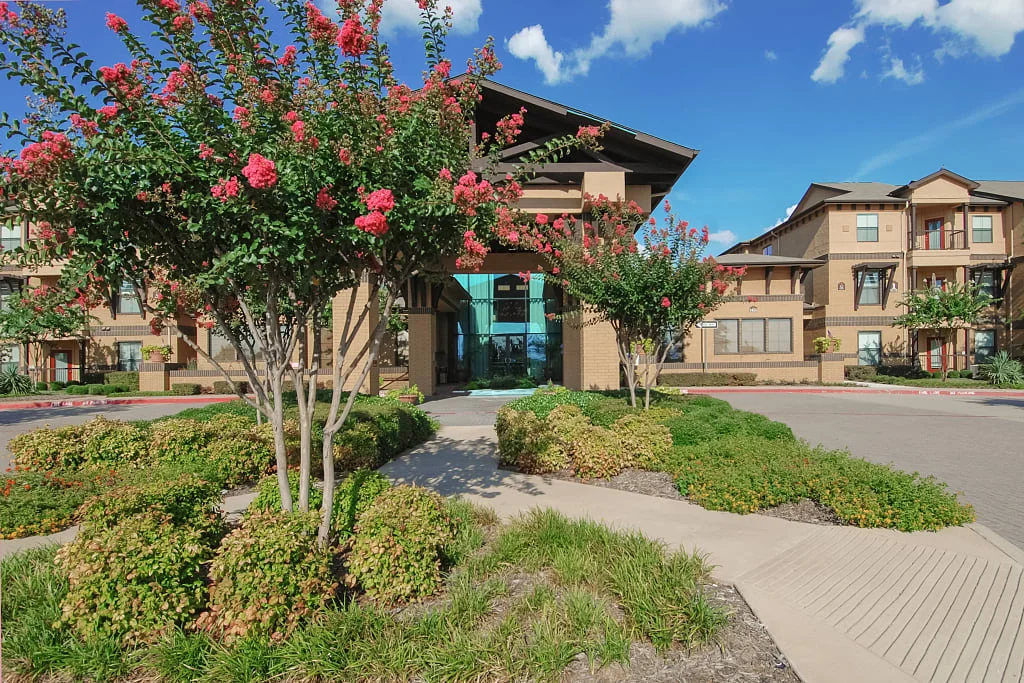
Unlike traditional apartment complexes, senior living apartments are equipped with amenities and features that cater to seniors’ unique requirements.
Key Features of Senior Living Apartments:
- Age Restrictions: Typically, senior living apartments have age restrictions, with residents usually needing to be 55 years of age or older. Some communities may have higher age requirements.
- Independence: Residents in senior living apartments maintain their independence. They live in private, self-contained units, which are often designed with features that make them more accessible for seniors.
- Community Atmosphere: These apartments foster a sense of community. They provide opportunities for socializing and engagement with other residents through shared spaces and organized activities.
- Safety and Security: Many senior living apartments come equipped with safety features such as emergency call systems, secure entry, and on-site staff or security personnel.
- Accessibility: These apartments are designed with seniors in mind, featuring wheelchair-accessible common areas, ramps, elevators, and grab bars in bathrooms.
- Amenities: Senior living apartments often offer amenities like fitness centers, communal dining areas, libraries, and transportation services.
- Maintenance-Free Living: Residents typically enjoy maintenance-free living, with property management taking care of landscaping, repairs, and maintenance.
Senior Living versus Assisted Living
Before diving deeper into senior living apartments, it’s important to distinguish them from other senior housing options, such as assisted living. While both serve older adults, they cater to different needs and levels of independence.
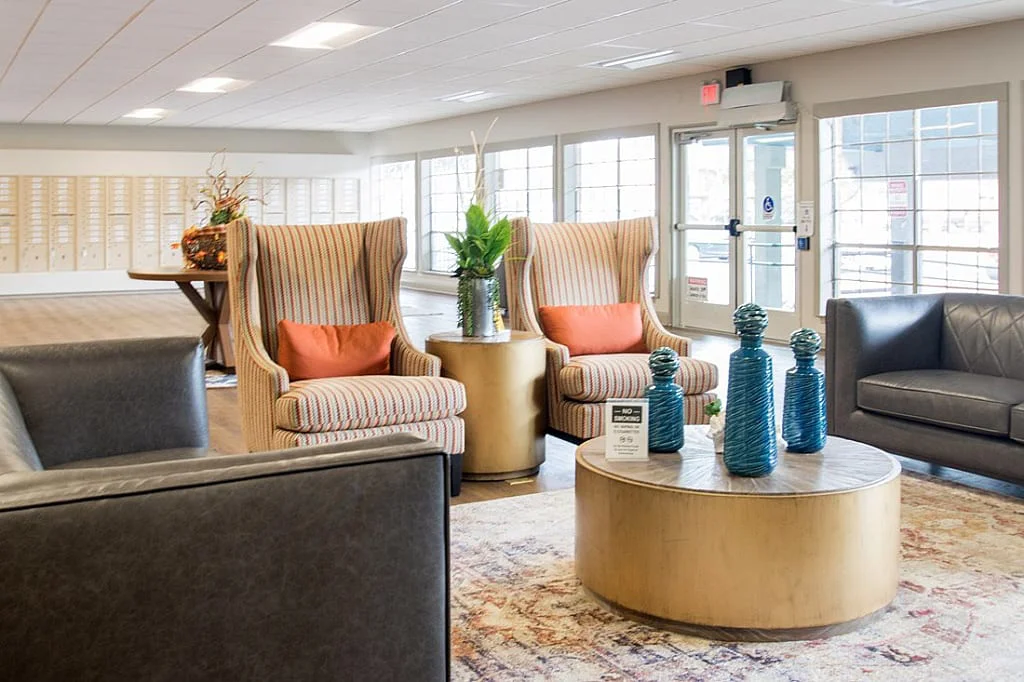
Senior Living Apartments:
- Independence: Senior living apartments are designed for seniors who are generally healthy, active, and able to live independently. Residents maintain their own apartments and handle their daily activities.
- Supportive Community: These apartments emphasize community and social engagement but do not provide extensive personal care or medical assistance.
- Amenities: Residents can enjoy various amenities like fitness centers, common areas, and organized activities, enhancing their overall quality of life.
- Cost: Costs tend to be lower compared to assisted living because residents do not require as much assistance with daily activities.
Assisted Living:
- Assistance with Daily Activities: Assisted living is tailored for seniors who need help with activities of daily living (ADLs), such as bathing, dressing, medication management, and meal preparation.
- Personalized Care: Staff in assisted living facilities provide personalized care plans to meet each resident’s specific needs.
- Safety: Assisted living facilities typically offer a higher level of medical support and monitoring to ensure residents’ safety.
- Cost: Assisted living tends to be more expensive than senior living apartments due to the increased level of care provided.
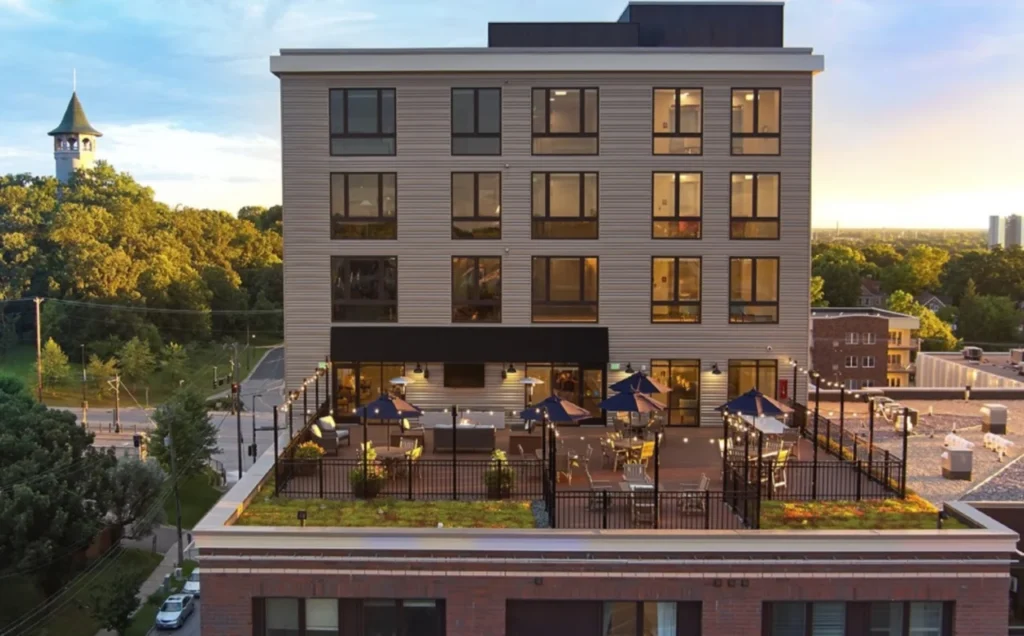
It’s important for seniors and their families to assess their personal needs and preferences when deciding between senior living apartments and assisted living.
How To Qualify for a Senior Living Apartment
Qualifying for a senior living apartment typically involves meeting certain eligibility criteria set by the community or property management. While specific requirements can vary, here are some common qualifications you may encounter:
- Age Requirement: As mentioned earlier, senior living apartments usually have age restrictions, with residents typically needing to be 55 or older. Some communities may have higher age requirements.
- Income Limit: Certain senior living apartments are income-restricted, meaning they have maximum income limits to qualify for residency. These limits can vary widely based on location and community policies.
- Credit and Background Check: Communities may conduct credit and background checks as part of the application process. A clean criminal record and satisfactory credit history are often necessary.
- Health Assessment: While senior living apartments are designed for independent living, communities may request a health assessment or medical evaluation to ensure that residents are capable of living independently without extensive medical or personal care needs.
- Application Fee: An application fee is common when applying for senior living apartments. This fee covers the administrative costs associated with processing your application.
- Proof of Identity and Citizenship: You may be required to provide documentation proving your identity, such as a driver’s license or passport, as well as proof of U.S. citizenship or legal residency.
- Financial Documentation: Some communities may request financial documentation, such as tax returns or bank statements, to verify your income and financial stability.
Note that eligibility requirements can vary significantly from one senior living community to another. It’s advisable to contact the specific communities you’re interested in to inquire about their qualification criteria and application process.
Common Amenities
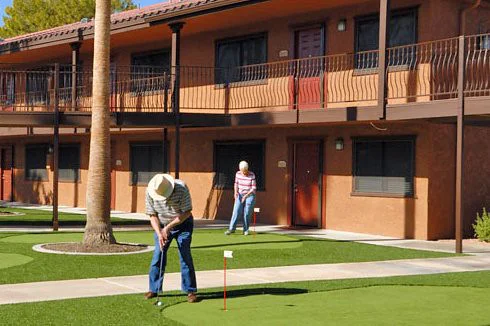
Senior living apartments are designed to enhance the quality of life for residents by providing a wide range of amenities and services. These amenities are aimed at promoting social interaction, physical well-being, and overall comfort. While the specific amenities may vary from one community to another, here are some common features you can expect to find:
- Community Spaces: Senior living apartments typically offer communal spaces where residents can gather, socialize, and participate in activities. These may include lounges, libraries, and game rooms.
- Fitness Centers: Many communities have fitness centers equipped with exercise machines, allowing residents to stay active and maintain their physical health.
- Dining Facilities: While senior living apartments often have kitchens in individual units, they also provide communal dining areas where residents can enjoy meals together. Some communities offer meal plans or on-site restaurants.
- Transportation Services: To facilitate mobility, some senior living apartments offer transportation services, ensuring that residents can easily access shopping, medical appointments, and other essential services.
- Emergency Response Systems: For added safety and peace of mind, these apartments may be equipped with emergency call systems in individual units and common areas.
- Social Activities: Communities often organize a variety of social activities and events, such as card games, crafts, book clubs, and outings to local attractions.
- Maintenance and Housekeeping: Residents typically enjoy maintenance-free living, with property management taking care of maintenance and landscaping. Housekeeping services may also be provided.
- Pet-Friendly: Many senior living apartments are pet-friendly, allowing residents to bring their furry companions along.
- Security: Security features like secure entry systems and on-site staff or security personnel help ensure the safety of residents.
- Guest Accommodations: Some communities have guest accommodations available for visiting family and friends.
- Wellness Programs: Wellness programs may include fitness classes, health screenings, and educational seminars to support residents’ physical and mental well-being.
- On-Site Staff: Many senior living apartments have on-site staff, including property managers, maintenance personnel, and, in some cases, healthcare professionals.
- Internet and Cable Services: Access to the internet and cable TV services may be included in the monthly rent.

Keep in mind that the availability of amenities can vary widely from one senior living community to another. When researching senior living apartments, it’s essential to consider which amenities are most important to you and align with your lifestyle.
Typical Costs for a Senior Living Apartment
Understanding the costs associated with senior living apartments is crucial for seniors and their families planning for retirement. The expenses can vary significantly based on factors such as location, apartment size, amenities, and the level of care provided. Here’s a breakdown of the typical costs associated with senior living apartments:
- Monthly Rent: The largest portion of the cost is the monthly rent for the apartment unit itself. The rent can vary greatly based on location, with apartments in urban areas generally being more expensive than those in rural or suburban locations.
- Utilities: Some senior living communities include utilities (e.g., electricity, water, gas, and trash removal) in the monthly rent, while others may require residents to pay these separately.
- Additional Services: If the community offers optional services like meal plans, housekeeping, transportation, or laundry, these will incur additional charges.
- Application Fee: When applying for a senior living apartment, an application fee is typically required. This fee covers the administrative costs associated with processing your application.
- Security Deposit: Some communities may ask for a security deposit upfront, which is refundable upon move-out, provided there is no damage to the apartment.
- Pet Fees: If you have a pet, there may be additional fees associated with pet ownership, such as pet deposits and monthly pet rent.
- Income-Based Pricing: In certain income-restricted senior living communities, the rent is based on your income, ensuring affordability for low-income seniors.
- Entry Fees: In some upscale senior living communities, there may be an entry fee, which is a one-time payment that grants you access to the community’s amenities and services.
- Long-Term Care Insurance: If you have long-term care insurance, some of the costs associated with senior living apartments may be covered, depending on your policy.
It’s essential to carefully review the terms of the lease agreement and pricing structure when considering a senior living apartment. Additionally, inquire about any potential future cost increases and how they are communicated to residents.
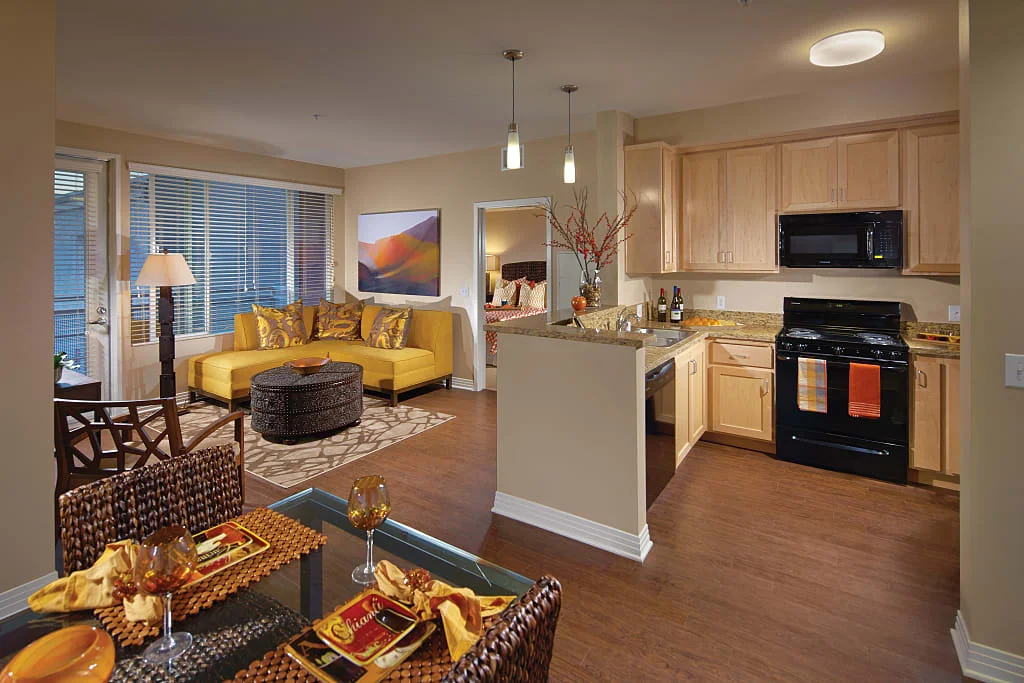
How to Choose the Best Senior Living Apartment for You
Selecting the right senior living apartment is a significant decision that can greatly impact your quality of life during your retirement years. Here are some key steps and considerations to help you choose the best senior living apartment for your needs:
- Determine Your Budget: Establish a clear budget by considering your income, savings, and any financial assistance or insurance coverage you may have.
- Location: Decide on the location that best suits your preferences. Consider factors such as proximity to family and friends, healthcare facilities, shopping centers, and recreational activities.
- Research Communities: Start researching senior living communities in your chosen location. Use online resources, visit community websites, and read reviews from current and former residents.
- Visit in Person: Arrange visits to the communities you are interested in. This will allow you to assess the living environment, meet staff members, and interact with current residents.
- Ask Questions: During your visits, ask questions about the amenities, services, and costs. Inquire about any additional fees or potential future price increases.
- Consider Amenities: Think about which amenities are essential to you. Make a list of priorities, such as access to a fitness center, pet-friendly policies, or transportation services.
- Review the Lease Agreement: Carefully read and understand the terms of the lease agreement, including the duration of the lease, any early termination clauses, and the policies on security deposits.
- Consult with Family: Involve your family members or trusted advisors in the decision-making process. Their input and support can be invaluable.
- Healthcare Needs: Assess your current and anticipated healthcare needs. Determine if the senior living community can accommodate those needs or if you may require additional support in the future.
- Visit Multiple Communities: Don’t limit yourself to just one option. Visiting multiple communities will give you a better perspective on what’s available and help you make an informed choice.
- Consider Future Needs: While you may be healthy and independent now, think about how the community can adapt to potential future needs, including assisted living or memory care.
- Talk to Residents: If possible, speak with current residents to get their insights into daily life in the community. Ask about their experiences and any challenges they’ve encountered.
- Seek Legal Advice: It’s wise to consult with an attorney who specializes in senior housing contracts to ensure you fully understand the legal aspects of the lease agreement.
- Trust Your Instincts: Ultimately, trust your instincts and choose a senior living apartment that feels like the right fit for your lifestyle and preferences.
Senior Living versus Aging in Place

Before choosing a senior living apartment, you should also consider the pros and cons of aging in place.
Instead of moving into a senior living apartment, seniors also have the option of remaining in their own home. While aging in place may sound like a “do nothing” option, it can be good alternative provided you make some home modifications.
- Familiar Environment: One of the primary advantages of aging in place is the ability to continue living in a familiar environment. This familiarity can provide a sense of comfort, stability and emotional well-being.
- Independence: Aging in place allows individuals to maintain their independence and control over their daily routines, decisions, and lifestyle choices.
- Lower Cost: Aging in place is usually cost-effective, especially for individuals who have already paid off their mortgages. There are no monthly rent expenses associated with senior living apartments.
- Home Modifications: To ensure safety, individuals aging in place may need to invest in home modifications such as shower grab bars, raised toilet seats, a walk-in tub, and other accessibility features.
- Health and Safety Monitoring: For seniors to safely age in place, it’s wise for them to have a medical alert system to ensure prompt assistance in case of an emergency.
Some home modifications to support aging in place may be covered by either a Medicare Advantage plan or a Veteran’s Administration HISA grant.
Read our guide to learn more about home modifications to support aging in place.
Final Thoughts
Senior living apartments offer a dynamic and engaging living arrangement for older adults who seek independence within a supportive community. By understanding the eligibility criteria, amenities, costs, and steps to choose the right community, you can make an informed decision that aligns with your retirement goals and enhances your quality of life during your golden years.
Remember that each senior living community is unique, so take the time to explore your options and find the perfect place to call home in your senior years.















